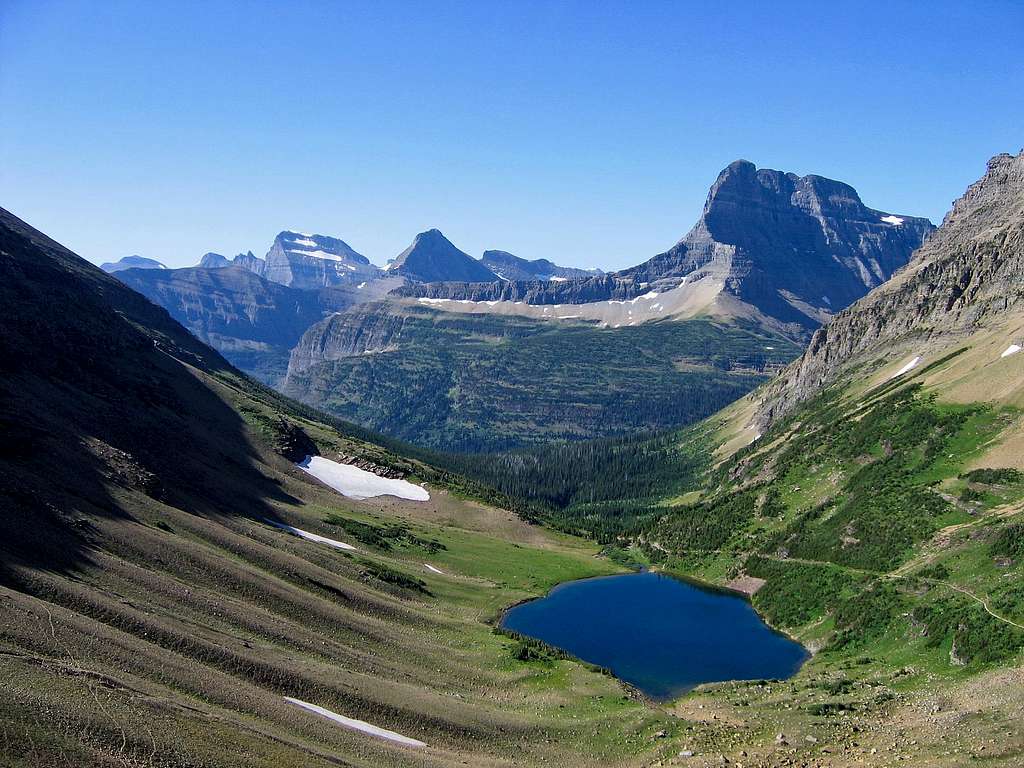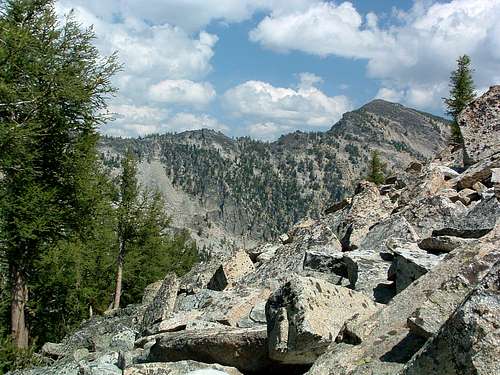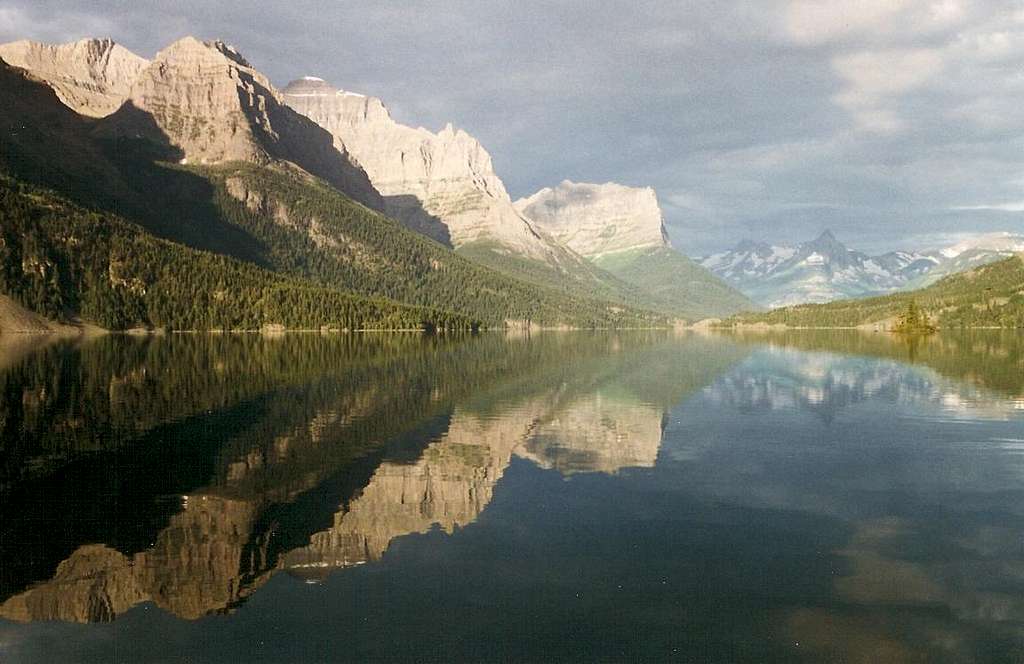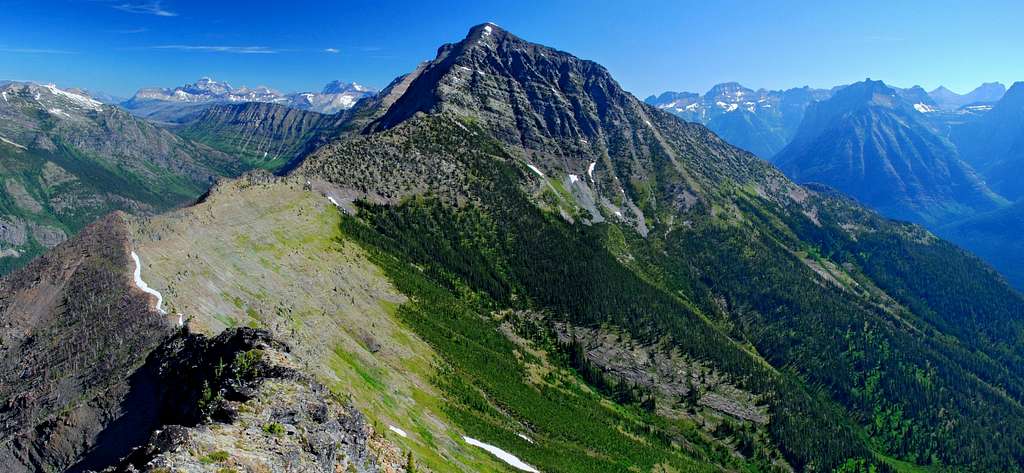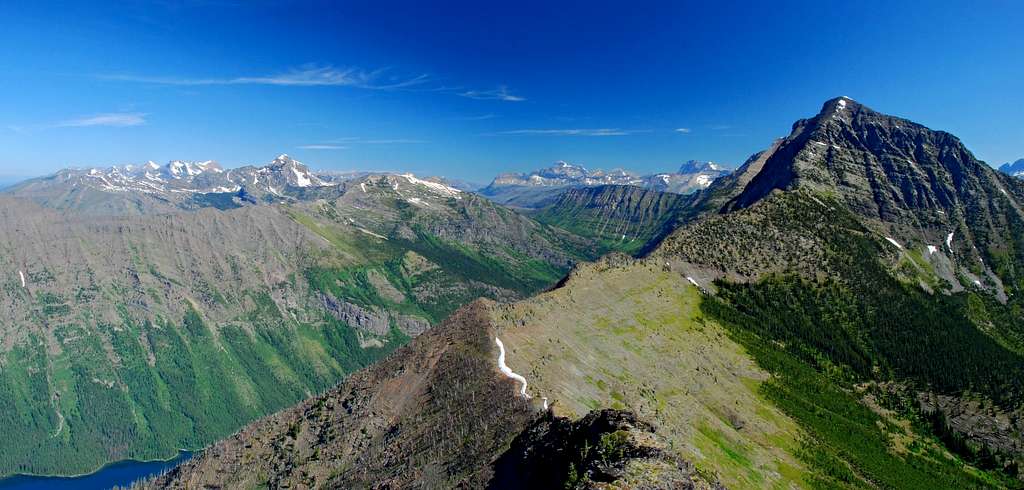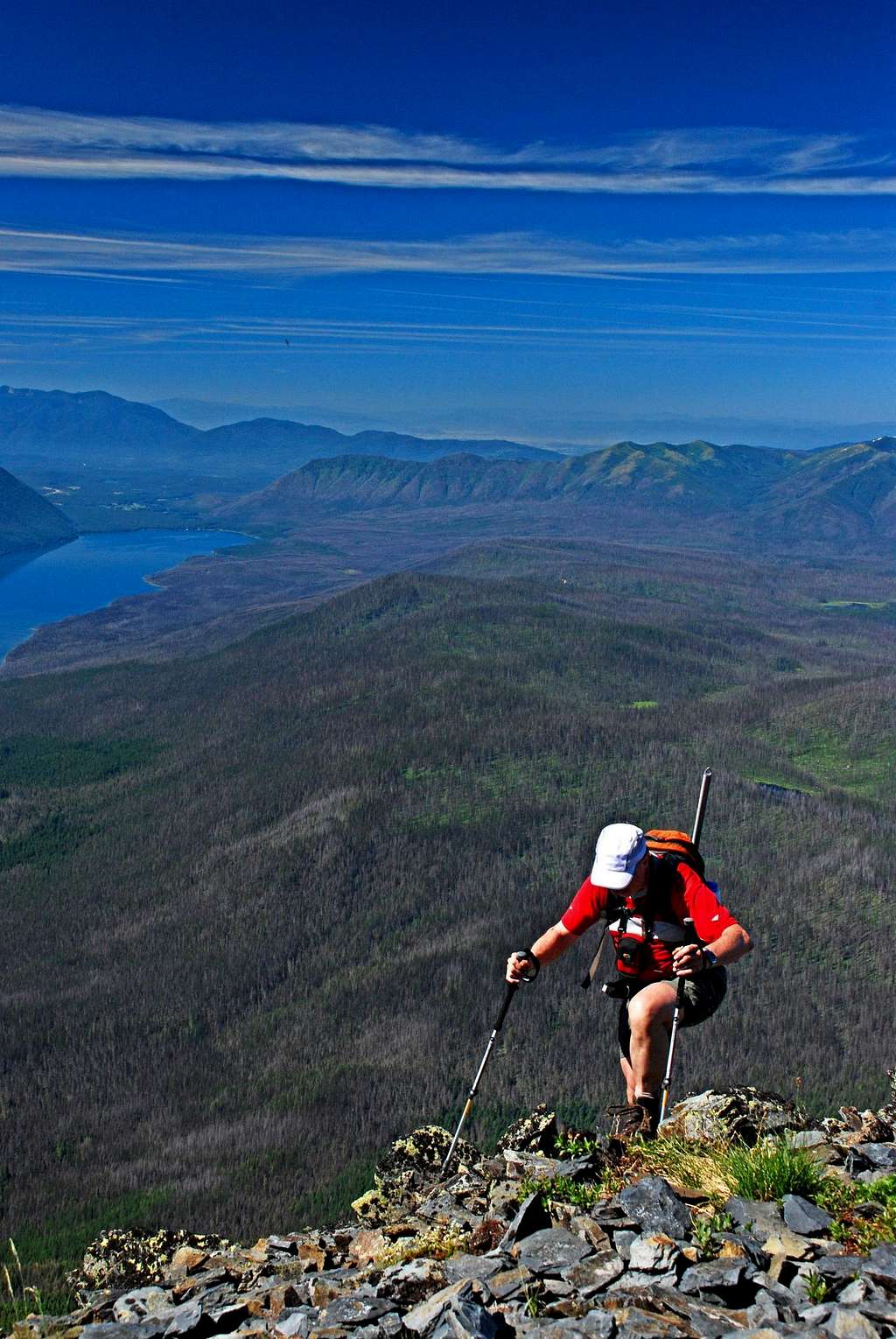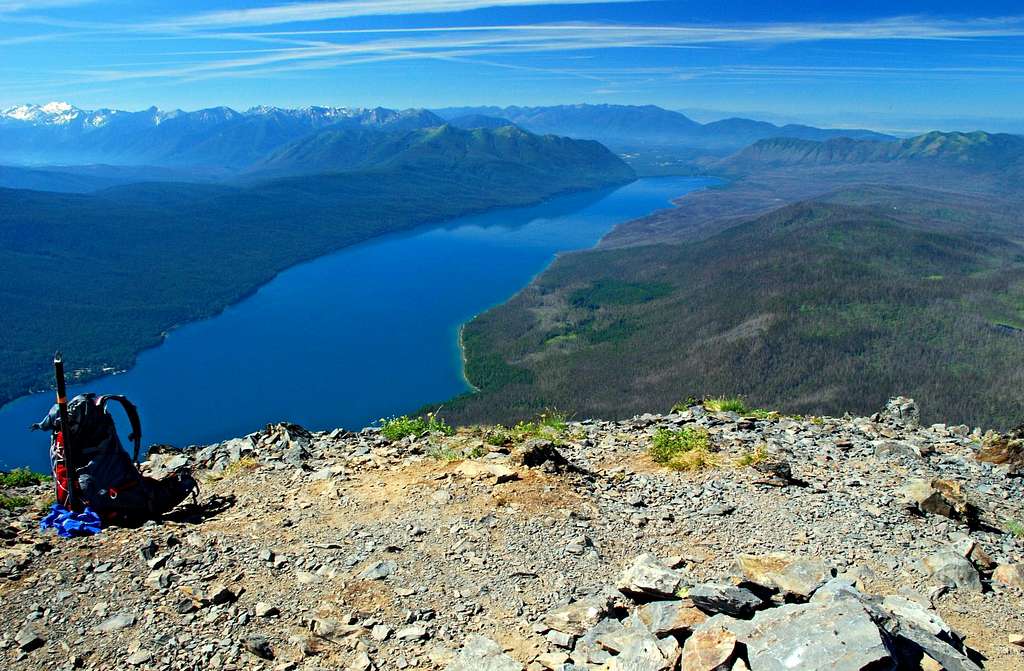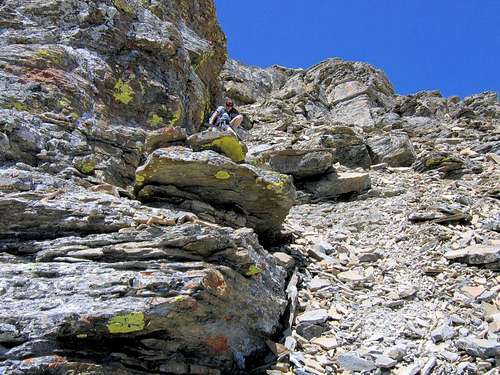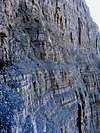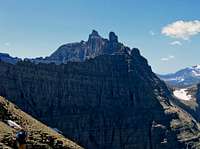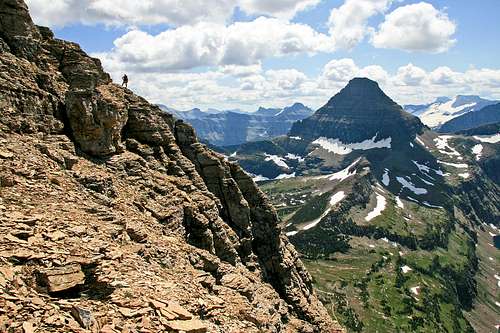-
 4989 Hits
4989 Hits
-
 71.06% Score
71.06% Score
-
 1 Votes
1 Votes
|
|
Custom Object |
|---|---|
|
|
Image Collection |
(January, 2011) FORMAT EXPERIMENTATION PRIOR TO POSTING
(you must come with me)—work in progress*
"YOU MUST COME WITH ME"
What follows is not by any stretch of imagination a history of my life. Rather, it is the telling of a turning point from which time has come unbalanced courtesy the slippery slope of a malignant fulcrum. Past, present, and future now reside under a microscope in my head, with the accumulated total of this introspection having become a great deal older than would normally be taken into account by the addition of mere numbers of years. The import (and certainly the length) of my life is much greater looking back than what lies ahead, yet the two—forward and backward—are somehow balanced throughout long days of contemplation in which it would seem that malignancy, when viewed through afflicted eyes, can even change the laws of physics.
So my story is one of (of course) mountains gone missing, but is (of course) much more. It is a reflection on thoughts and values forcibly altered. What seemed to work in the past is no longer able to slide through a feeble-minded and—dare I say it?—happily ignorant rationale. Cancer's mirror is quite honest, painful, and...truth be told...more than a little cleansing.
(And here it needs mentioning that this is a continuation of an article posted in March, 2010, a couple months after I began treatment for pancreatic cancer. Much has occurred in the interim, but that long-ago—for so it seems—beginning, if you are interested, may be accessed here. What follows is an extension of that earlier time, and for better or worse, is my attempt at coming to grips with a thing we all eventually face—only not usually with this kind of advance notice.)
INTRODUCTION
PART I.
What a difficult thing it is explaining to the world that it must stop whatever it is doing, that I need every person to share the shattering impact of words explaining that no matter my involvement with life and mortality, an end may well be looming. That I am in an agony of confusion and despair! This is the most hugely important occurrence in all history, and it is only fair and necessary that everything, everyone must come to a complete cessation of whatever is the activity of the moment to, at the least, indicate concern over my plight. After all, this most important happening ever is wreaking havoc with my playing amongst the sustenance of the far summits; life cannot just continue blithely on as though that were of no import—(Now pay attention! I must share this with you!)—and I am not egocentric, either; it is just that, well, remember the age-old question (almost always the concern of those to whom relevance is not an issue): Would you like to know the time of your death? At this moment...I think not! But the scale measuring such things is sliding, not necessarily to a specific date of demise, but to a certainty that that end is, or at least very well could be, an uncomfortably-near-at-hand experience. Which is not only quite disconcerting, but the most grandiose and humbling thing imaginable.
Simply stated, this is not going to work; you see, I had other plans which, needless to say, did not include my demise. All I had wished was to continue the climbing of mountains, but (way back at the beginning, now almost a year past) the first happenstance was that without warning I was taken out of those mountains to be told I might die (there, I've said it!), which, among other things, makes it difficult to maintain an equanimity of spirit; being told about your own possible impending end forces a confrontation with pride (no way to rationalize that away—you lose, every time). It also makes one ponder the lure of living, and what—really—it is that makes that living worth the struggle. But I have sidetracked myself; life on the outside did not stop at the revelation of my possibly sordid destiny, but, amazingly, kept its course (almost, and this is surprising, because certainly I must be more important than that), as though my departure would not disrupt the world.
So I rail and flame loudly—although rather impotently—at the fates, but be that as it may, it began this way....
"You have pancreatic cancer, and must come with me."
I said nothing, but climbed onto the porch, placing a chair so as to face the setting sun as it moved to enter the distant mountains. A couple hours later darkness slowly slid in front of the peaks, and they winked softly, and were gone. Only then did I make the effort to go inside and meet my new companion.
Those words (and that occurrence), spoken so many months ago, were life altering. And while (honestly, I really do understand this) nowhere near as serious as a civilization going up in flames, or a war destroying everything in its path but hatred, for me that short sentence was—and still is—a world, and easily suffices on the monumental side of nothing will ever be the same again. Time no longer trips gaily through the oncoming years, but has become tenuous, uncertain, at times a darkened way running without warning off a high cliff.
"There is a malignancy." Even though still slightly under the influence of anesthesia, I am not too proud to admit that those words, coming as they did from the doctor doing the diagnostic test, promulgated a dark and icy torrent of needles running from head to toe, became a hunter circling, then having located its prey, settling in for the duration of a long watch, leaving me, terrified, to deal with an enemy overwhelming in its proportions. This was not a fine moment of defiance, but rather one of logical and instinctive questions (or so I tell myself), such as, "Why is this happening?"—followed by (of course) the inevitable, loudly proclaimed (at least the shriek in my mind seemed that way), indisputable statement "It's not fair!" I lay quietly amongst the mental mayhem, and not too long afterward a nurse came, saying I could go, and handed me a slip of paper with an appointment written on it. Discovery and diagnosis now in arrears, I guess that is how it actually began. Of course I did not (I do not) really expect the world to stop simply because of the all-encompassing importance of my plight; that sentiment is merely me being afraid and self-centered, and for the first time dealing with emotions too large to fit within my poor, sick body of pain and betrayal. And, truth be told, at that far-off beginning there was not yet the awareness (even if all went well) that I had lost a year of climbing. A year, if I was very fortunate.
Crossing the threshold, then carefully closing the door behind me, the room became a desperate plea for survival, and just like that, I gave myself up to the doctors of oncology and radiation. (I well remember filling out the first of several forms, and at the bottom of the last page was a query, "What do you expect from the Cancer Center?" to which my fervent response was, "For you to save my life." Nothing else seemed appropriate.) And so the beginning was not at all difficult to accomplish, was as easy as one day noticing an abdominal discomfort that would not go away. Now firmly ensconced in a place and time beyond all mountains, the search for the ability to once again find those very peaks began with the simple act of a door shut gently, then turning to face my new companion. (Oncologists seem to me a most diacritic breed of physician; after all, they are among those almost never dealing with any but potentially life-threatening circumstance, thus day after day walking a tightrope to present not only encouragement, yet at the same time neither false hope nor undue hopelessness. Reality is often such a difficult thing to pin down!)
And so began almost a full year of chemo and radiation: Pain and nausea (morphine a blessing for the former; the latter mercifully not so bad as it is for some), and the most awful, penetratingly indescribable weakness imaginable. ("I wonder if I can just lay here, and put off going to the bathroom for another hour.") And shedding weight ("You may be sitting on the couch, but every cell in your body is fighting this cancer, and it's as though you're running a marathon; I don't care if you eat nothing but ice cream, you've got to stop losing weight!"—that stern delivery from my oncologist is how I learned that people will sometimes die of malnutrition, rather than the actual disease), then discovering it was possible to eat four or five small meals a day, to at least maintain. Sometimes, during the worst moments of those wearyingly timeless days and nights, I couldn't remember how to climb a mountain. Or what they looked like. During the most pathetic of it, there were no distant peaks in my mind, no visions of siren sunrises or alpenglow to pull me through, but—rather—a mutable, tenuous clinging to the belief that somehow, at the end, I was better—would be better—than this ignoble disease. Sometimes that is all I had, and even then that conviction was far from certitude. There is, after all, no rapprochement whatsoever with quisling cancer!
But there were signs. Portents that perhaps this accursed affliction (as the verisimilitude of both oncology and radiology informed me very early on, pancreatic cancer is one of the bad ones) was not to result in some kind of irreversible start-to-finish slide into oblivion, but maybe, just maybe, it would be possible at some point to grasp the proverbial straw of no guarantees (never, Never, NEVER any guarantees!), but all things considered you are actually, despite being miserable, doing quite well. Blood tests showed that, rather than it having little or no effect, my body seemed to be readily-enough utilizing the chemo, and in addition, even though afflicted with a rapidly increasing weakness, there was not the perversity of excessive nausea with which to deal.
Then, about half way through the ten months or so of treatment, came two months of five-days-per-week radiation, with its dramatic change to a different chemical—force fed via a pump worn day and night to provide a constant, twenty-four hour delivery. This new poison (there is no other word so accurately reflecting my views on the matter) resulted in a dreadful misery in the form of rather horrible ulcers running from mouth through my entire digestive tract, and as I soon learned, sometimes that radiation-accompanying chemo cannot be tolerated at all (mouth and throat become so painful it is impossible to eat), and radiation given without benefit of that concomitant sibling "poison" is not nearly as effective, the lack of which all too often is tantamount to a death sentence. I think my tolerance a matter of luck; slightly reducing the intake of that awful, awful stuff enabled me to continue eating, yet kept the radiation happily occupied with mortally wounding the despicable malignancy. No skin burns or debilitating nausea marred the days, and even though weakness was at times a thing of almost unbelievable depth, throughout it all, while it seemed I was in a rather pitiful state, it could have been worse, and I was better off, or so I was informed, than most. Be that as it may, those weeks of radiation and constant chemical invasion, were the worst thing I have yet gone through...ever. It gave a real sense of relief to return to the original, once-a-week chemical treatment!
But enough of that: Even in a best-case scenario, the combination of chemotherapy, radiation, and the omnipresent nightmare emotions engendered by the affliction, are not something with which it is easy to deal, and while in truth I am a long way (or so I believe) from the worst of it, I now at least inchoately understand why it is that cancer victims sometimes, when faced with the ultimate diagnostic sentence of grim months (or even years) of chemo—with the disease, despite exhaustive medical intervention, becoming ever more relentless, hopeless—will forego all treatment, and subsist as best as possible on pain-killers until the carcinoma, freed from the annoying hindrance of medicine, runs to its inevitable conclusion.
Not too long after the completion of radiation, the world gradually became a better place, and I would sometimes leave the conscripting confines of illness-induced solitude to walk around the small village in which treatment was taking place. The easiest way led down a slight slope, but that path came to an abrupt end on the banks of a large river whose dark waters appeared abruptly, almost magically, through a distant mist, moving silently, strongly, seemingly coming from nowhere, growing quickly to dominate the view close at hand, then moving inexorably to a fine point before disappearing in the far distance. All too easily, imagination projected the disconcerting impression that before me was a watery barrier with neither beginning nor end, but something that in its greatness encircled the world; here were possibilities, not all of them for the best, and the feeling was strong that were the far side of that mighty river to be obtained, an ultimate line would have been crossed.
A nearby ferry proclaimed easy egress, but upon speaking with its boatman this person stated emphatically that the crossing, while not particularly difficult, was one way only, that return would not be possible. On these first, still feeble, perambulating days of slight exploration I now felt enough improved that it became possible to once again (at least vaguely) imagine a life with mountains—but not this way! Hell lived across that bleak river in the form of a fog-infested, non-ending plain, a hell that slid beneath waves of uncertain light to a very monotonous, and quite distant, horizon. Abruptly turning my back on the boatman and the offer of safe passage I returned to the medical building, crawled into bed, then spent the next hours restlessly tossing and turning, fighting depression, trying feverishly to imagine—to remember!—the wonder of life among the peaks, and ultimately wishing this infernal night would just come to an end. I never went near the river Lethe, with its awful planate perspective on life, again.
Days passed, then weeks, and occasionally I found it relaxing to take a break from my normal walks to sit on the porch, taking advantage of the afternoon sun. What a nice respite those times were from the closed-in perspective of that dismal cancer ward! I would sit, arms spread, eyes closed, full force of the sun directed at my abdomen, and imagine that heat being a beam of purest radiance, easily penetrating to the sordid mess lurking beneath my skin. A gentle cleansing thing, that light, come from the sky to wrap around the sickness, extracting its horrible essence to the winds, leaving in its wake only health, and the ability to partake of life. Ah...if only hope and wishes were reality!
Then one day the sun, the winds encircling that afternoon porch, brought a gift. Sitting as always, half asleep in the palliative light, something touched my mind. A whisper, maybe from the sky, possibly from the depths of memory or desire, but coming as it did in the form of two simple, gently spoken words, I heard what was at that time more than enough to attract the attention of a desperate need. Long Knife...come out of a lost past to sate my mind, those two short words—bespeaking, after all, of nothing more than a singular mountain—became the greatest speech imaginable! Again and again came the echo...Long Knife...Long Knife...repeating until the waves of longing faded, became nothing—easily enough to bring this slumber to an end. Struggling towards full alertness, apprehensive that imagination might be yet another trick of this accursed affliction, I sat upright, trying desperately to pull those words again into my mind. While in this emotionally vulnerable state, the very center of my being gave rise to another susurration: Cleveland...Wilbur.... And with a dawning awareness came tears, and finally, in that golden afternoon radiance borne on winds from the four corners, the dam shattered, and mountains poured back into my life. They were legion, and it was the most wonderful thing imaginable! Little Chief, Vigil, Gable, Longfellow, Despair, Natoas, Amphitheater...the names mattered not a whit, what was so terribly important was that they were mountains, no longer lost, but present and marching in a most dizzying array of presentation. So in the afternoon heat I sat on that porch beneath a turning world, happily tossed by winds from the summits, and listened, and with the words heard cancer receding into the distance...Medicine Grizzly, Pinchot, Battlement, Chief, Guardhouse, Stoney Indian, Wahcheechee, Heavens, Yellow, St. Nicholas, Going-to-the-Sun.... On and on they came, and how happy to have my senses so overwhelmed! Geography slipped, and with it a small bit of the world expanded, loomed unforgettably...Gray Wolf, Granite, Ibex, Crazy, Swan, Snowshoe, North Trapper, Warren, Sphinx, Calowahcan, Daughter-of-the-Sun...the sound of cancer in remission, chased by the great peaks within my head! (And at long last, the end of chemo, with only a final diagnostic test standing between confirmation of the finish to this living nightmare and a never-ending summer of once again dancing on the shoulders of high places!)
"You must come with me." Oh me oh my!—if only hope and wishes were reality, what follows would remain forever the provenance of fairy tales, rather than actuality. But such is life! For it then happened that one night a cold rain came to this village by the river Lethe, the winds turned bitter, and delivered on the back of a terrible and clouded dark were words neither easy nor kind. A familiar pronouncement, it is true, but now, as I had become victim of the unforgiving waters, their meaning was lost to me; those words were very possibly destroyers of the last vestiges of hope, and—unkind fate, I had forgotten their origin! At first of no more moment than a faint tapping asking entry to cognizance, the unfurling began softly, in the far distant reaches of perception, but soon grew to dominate my every waking thought, that perhaps the message was not that of a trained healer offering assistance in a life and death struggle, but amounted to something far more desperate, that coming at me out of the far-flung dark of my mind was not so much bits and pieces of contested life and death (although it could certainly and easily be such!), but that of a hideous falling away from Long Knife. And that playing in the sky was now growing more remote with each passing day.
PART II.
There had been an all too brief (but oh how wonderful!) span of genuine optimism, a time when "the gift" ran freely through my mind, and I had even been able to wean off morphine (what a significant positive step: No pain medication needed but over-the-counter product!). Taken in conjunction with encouraging words from the medical staff, could it be possible, was I one of those actually destined to beat this thing? But then, with summer's finale the world turned, from lush, to collages of bright colors, to foreboding brown, to bared limbs of more pain. This damned affliction...if only hope and wishes were reality! There had been warning that even in the best of scenarios, "pain-free" did not exist in my immediate future, and if it became too much, to not hesitate, but phone in my discomfort. Said circumstance of which did indeed occur: Ache became—first—discomfort, then concern, then real distress turned to a rehabilitation of morphine, and that at a time when nothing remained but final consultation verifying that all was well—or, at any rate, as well as perfidious cancer allows. Initially, the recurring torment was not too bad, but it took only a month or so of steady deterioration until no choice remained but for another oncological meeting of the minds (that is, my companion spoke, and I sat quietly, sinking further and further into the depression accompanying the end of good things).
Now, as I move through this dark forest of plague, a query begins lighting my mind, until with a single-mindedness of purpose it reaches back all those many years to the beginning, asking of this fickle night's gradually emerging effulgence, What is important? And so it is that with those three words a capricious dawn innervates these trees of night, cancer's fine edge drawing it all forward until I find myself engulfed in a summation of what has gone before, yet defined by that still to come. The question cannot be ignored, is everything, and survival without answer is nothing. Those all-too-familiar old acquaintances of pain, and an as yet indeterminate possibility of continued life, have become enjoined by new thoughts with which to fuel more endless nights of cancer-spawned sleeplessness: What is it that is important? If, perchance, answers to this question are in the offing, I can make of cancer a gift to take through life, making of it something meaningful, or—if it unfolds this way—death will be made all the more poignant for the interruption of a late-arriving bloom.
Thus it is that perspectives change. Also priorities. Values. The all-too-real possibility of a finitely defined (small) number of remaining months or years makes it so. "What is it, is important?" becomes more than a mere idle thought of torment, becomes a definition of the very quality of life. And while sometimes during the exuberant rush of climbing-self-delusion I wish it were otherwise, the valleys slumbering far below, the peaks above, are not the entire sum of existence; there are other offerings than the geological giants of the earth.
Humanity itself has much to offer, and what a pity is the absence in life of the most transcendent of jewels, that of thought, and by that I mean the eloquent expression of the greatest minds saying what they believe through the act of literature, music, science, philosophy. Somehow, dying without my having taken in the enhancing values of War and Peace, The Divine Comedy, The Trial, or Hamlet, or Oedipus, cheapens that of which I am—and have been—capable. Opera reigns supreme in my hierarchy, and must begin (but most certainly not end) with The Ring of the Nibelungen. Closely followed by (but not ending with—there is no end to this!) Les Troyens, The Marriage of Figaro, The Bartered Bride; listen (and think, and feel), as greatness continues with Carmen, Boris Godunov, Falstaff, Pelleas et Melisande, and the eponymous Prokofiev opera based on Tolstoy's above-named great novel. Or the stupendous thing Janacek did near the end of his life with another Russian literary work, Dostoyevsky's Memoirs from the House of the Dead. And how foolish to believe it possible to name them all—like those mountains appearing in my head, they cannot all fit, but how wonderful it is attempting to force the issue!
There was an unforgettable six years' residence in San Francisco, mostly school, but also a couple years just "hanging around the neighborhood," taking in the many offerings of the great city. Night after night exploring the (to me) mind-altering wonders of foreign film, days of wandering the many art galleries, filling my mind full to overflowing with the efforts of like-interested individuals. During that time I was fortunate enough to spend a semester overseas, and those memories return as a tidal wave now: Once, in Amsterdam, I remember sitting alone for an hour in front of Rembrandt's Night Watch. Then, a week or so later a couple of the more memorable days of my life were spent in Oslo, walking amongst the mind-blowing creations in the (Gustav) Vigelund Sculpture Park. Is that the greatest, most original, park on the planet? Perhaps yes, possibly not; I believe "Yes," and don't care to dispute the point. It is what it is: To me it is supreme. Yes, the creation of our myriad works of thought, the appreciation of, the understanding, all takes effort, but humanity has so very much to offer! It is enough to give a cancer-riddled body reason-enough to look in the mirror, and live.
PART III
A year has passed, and once again the door swings shut; honesty and competence meet my gaze, and the room is alive with yearning for Christmas's future (please, please, please!). For dancing on the wonders of Long Knife, for THE VIEW that seemingly encompasses most of the world. I look into the face of oncology as things that matter play through my brain, gaze into the knowledge of my future, and wait for the impartation. Images from a Bergman film flit by; Bach, Schubert, and Mahler vie for their place in the pantheon of what really, really matters. Cleveland and Granite and Gannett change with the entrapping seasons, otherwise do nothing but provide wonderful opposition to those plains on the far side of the river Lethe; I hold Faust in my hands, and as the pages turn, the perils of what may be sacrificed in the myopic striving for too much of a good thing become an all too real act of hubris; cranking up the volume on Quadrophenia reveals the kind of protest actually having something to say besides just yelling. And as I wait for doctor's words I wonder, will my family, my friends, share in my dying? (And how very much I hope not...words don't cover those exigencies.) Then, after a year of pain and mental anguish, exhaustion and sleepless nights, and morphine...the silence is broken.
"The CT-scan is inconclusive, and we'll do another one in two months, which should reveal what we need to see." There it was. Never, Never, NEVER any guarantees. Further conversation revealed why, that scar tissue, a cyst, were blocking the scan, but also some encouragement in that, "I think everything is okay, that the increased pain you've been experiencing is not cancer, but inflammation from radiation—which can last as long as a year, and be quite intense...." There was, of course, further discussion, but the only certainty forthcoming was that of waiting, and more pain killer needed. Waiting, for "whatever" to move or develop enough to make its intentions known. In the meantime...
...words spoken, not unkindly, but more than a little sobering in their impact. "Even though doing very (even unusually) well, you still have quite a few long odds to beat. This is the time dreaded by all cancer patients: Will it come back? With pancreatic cancer the odds are against you; it usually recurs" (then, this spoken softly, emphatically), "BUT NOT ALWAYS. All you can do is take it a day, a week, a month, at a time." Then came the final summation, again hushed, against a background of kismet: "If you get through two years without recurrence, it will be possible, and not unreasonable, to become cautiously optimistic." Well okay, so it is two years to "cautiously" optimistic.... After getting through the upcoming "two-month" CT-scan, that is. THEN on to the longer period of uncertainty. Which leads (this was also explained as part of my viable time line) to the hoped-for "standard" cancer-free period of five years. I do not mean to be unduly grim and hopeless, but have long since reached the point where a mighty truth dominates my small corner of the cosmos: Cancer's a bitch. And there is absolutely nothing risible buried within that statement.
To this day I do not know whether "You must come with me," is a message come from a healer as a comforting statement leading to survival, or is a savage utterance of terrible purpose delivered by malignant cells of insanity. What I do know is that the point is to live.
Pictures
TO BEGIN...CAREFULLY
| Image taken while standing in front of the Ptarmigan Tunnel, looking back along the access trail from Many Glacier's Swiftcurrent Campground. Relax, enjoy the view, but don't dawdle for long: awaiting is an unforgettable excursion through the definition of what a mountain paradise is all about... |
you get there by going this way...
Boxed Text
This box of text will display full-width on a screen and requires no special "playing with the line-feed carriage-returns" - < br >| Image taken while standing in front of the Ptarmigan Tunnel, looking back along the access trail—seen at lower right—from Many Glacier's Swiftcurrent Campground. Enjoy the view...relax...but don't dawdle for long: awaiting is an unforgettable excursion through the definition of what a mountain paradise is all about... |
---------------------------
The following box of text which is displayed beside a picture in a table DOES require the insertion of the "BR" code to display properly. AND to make it work properly, you have to decide for which screen size you're going to optimize. It's probably better (certainly easier) to just use the full-width box of text.
|
Image taken while standing in front of the Ptarmigan Tunnel, looking back along the access trail—seen at lower right—from Many Glacier's Swiftcurrent Campground. Relax, enjoy the view, but don't dawdle for long: awaiting is an unforgettable excursion through the definition of what a mountain paradise is all about... |
Side-by-Side
Stanton Mountain Pictures
TEST
Trial & Error & Experimentation
Where to begin? How to begin? Good questions indeed, and since this page deals with an area, and a well-known area at that, described by no less a personage than the great naturalist and explorer John Muir as, "the best care-killing scenery on the continent," I think the answer is: begin carefully. And so it does. But also, and perhaps a bit surprisingly, this page begins with something not so well known, yet something getting-in-your-head memorable that won't for any reason leave (not that you want it to), and in this Glacier National Park of unforgettable peaks, it is not even a climb. Carefully begun, indeed! It is the Ptarmigan Tunnel to Ahern Pass Goat Trail, which J. Gordon Edwards, another individual knowing more than a little about mountainous terrain, called "The greatest twelve miles on the North American Continent." I don't know nearly as much as did Edwards, but even in these mountains about which I'm generally reduced to speaking of in nothing but superlatives, the Ptarmigan Tunnel to Ahern Pass Goat Trail is indeed quite special, and very much worth your attention. Therefore, after a relatively easy five mile jaunt (although the last 2.5 miles do climb quite steadily) from the Swiftcurrent Campground past the likes of Mount Gould, Mount Grinnell, Mount Wilbur, the Pinnacle Wall, the deceptively rounded west side of Crowfeet Mountain, with the sun just peeking over its rim....
That is what this page begins with.
There are a few things to remember, four of which come immediately, easily, to mind: Merritt. Ipasha. Natoas and Ahern, the bookends. Over and over they come at you, from that first unforgettable view when,by the simple act of walking around a cliff, with no warning you come face to face with thousands and thousands of vertical feet of glacially chisled rock looming impossibly big across the canyon, and no matter how many mountains you've already seen, it's special, and you know it's Merritt, with Old Sun Glacier drawing your eyes again and again to the summit, then sliding along the sharp-spired ridge to neighboring Ipasha—to a mountain as beautiful as its name. The glaciers had a field day here, munching and carving and ripping and making Paradise, and you do what everyone does: stop in your tracks and try fitting the vision in your head, until those behind let you know they'd like to see as well so would you please move on. Then, soon you hear the ones behind them, "hey, move along."
This goat trail has its dangers with exposure, and one soon learns to not walk and gape at the same time. The actual cliff part of this trek is about four miles long, and even though there is relief along the way, for maybe half that distance slipping on a pebble could prove...well, it's not something you want to do. You need to know how you react to exposure beforethese miles of greatness. In addition to the magnificent cliffs above and below this seemingly fragile marvel of goat engineering, across the way—always, The Four lying across the way!—is the Lithoid Cusp, the highest of a series of sharp, none-of-which-have-ever-been-climbed, spires forming the ridge between Merritt and Ipasha; and, at one point—not over there, but over here—the cliffs bend, wrap in a bit of a curve to reveal an unusual view of Iceberg Peak; then finally, coming towards Ahern Pass, the view opens to reveal another, more distant, beauty: seldom-climbed Longfellow Peak.
From Ahern Pass (and early in the summer you'll want both ice axe and crampons to ascend the snow field to the saddle—later in the summer you'll probably still want crampons; we did it late in July of a dry year, and were glad to have them) the ascent is 600' up to Iceberg Notch, which gives a rather precipituous view of the almost 1600' vertical climb down the other side to Iceberg Lake. I remember rather innocently asking, "where's the way down?" (I mean, for crying out loud, standing on the notch and peering down at the lake, you couldn't even see the way; it was too steep!) The answer, all the while gesturing down ("down" seems to be a key word here) to the lake, "that way." Very funny. But no ropes needed in good weather (actually, we didn't take ropes with us, because this entire outing is NOT something to do in inclement weather: don't even consider it!), but in several areas on the descent it helps having others along to assist with foot/hand placement, and in all honesty, once into the descent it wasn't as bad—quite—as that first impression made it out to be. From Iceberg Lake it is a nice trail stroll five miles back to the Swiftcurrent Campground. Total round trip is sixteen miles; I don't know which of them are Edwards' "twelve." It doesn't matter. A day spent doing the goat trail from the Ptarmigan Tunnel to Ahern Pass will change your life. Or at least the Glacier National Park portion of it.
Where to begin?
With something stunning, something getting-in-your-head memorable, that won't for any reason leave.
Not that you want it to....
Placement experimentation
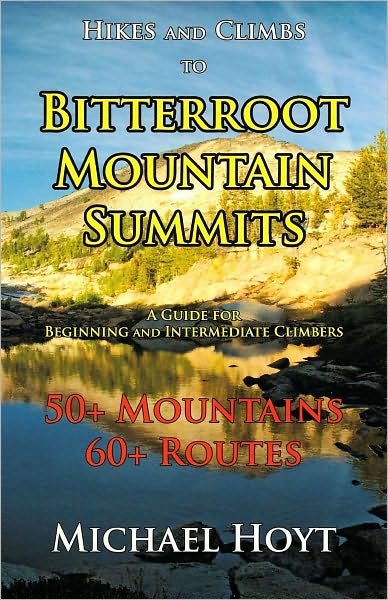
Experimentation
More Experimentation
One of my goals in writing this book is to help more people enjoy the Bitterroot Mountains. Unlike some, I do not think the Bitterroot Mountains should be kept secret in order to protect them from future damage. Rather, I firmly believe they will only be protected if more people experience them first-hand and therefore gain a personal stake in their future.
testtest
Route Type — Hike
Class Level — Class 2
Effort Required — Strenuous
Summit Elevation — 9,033'
Elevation Gain — 3,138' (round trip)
Distance — 5.6 Miles (round trip)
TESTTESTTEST
The most-used hiking route to the summit of Little Saint Joe is not a well-engineered trail—cynics believe no engineering was involved. It closely follows a ridge crest from the trailhead to very near the summit. Although lacking technical difficulty, it's a severe test of stamina.
Little Saint Joe is a popular mountain for back-country skiing because of its very limited potential for avalanche. This route is a good one for those wishing to reach a summit early in the year, late spring or early summer. Once the snow is well consolidated, go for it!"








